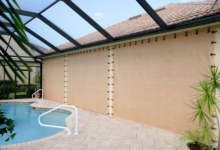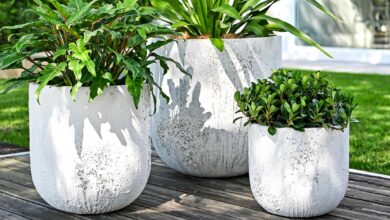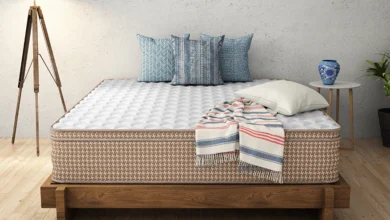
A Long Game: How to Get Rid of Black Algae in your Swimming Pool?
Black algae are considered the most dreaded algae in swimming pools. Unless you enjoy admiring their appearance, the sight of black algae growing in your pool can evoke a sense of impending doom. This is because no matter what method you use, whether biological, physical, or chemical, it is difficult to quickly eradicate black algae.
Before learning how to deal with these organisms, let’s first learn something about black algae.
Table of Contents
What’s on earth“black algae”?
Hydrilla verticillata, commonly known as black algae, is a perennial submerged herbaceous plant belonging to the genus Hydrilla in the family Hydrocharitaceae. Its stem elongates and branches, and the leaves are linear or elongated, arranged in whorls, often with purple-red or black spots. Widely distributed in tropical to temperate regions of Eurasia, it often grows in freshwater habitats such as lakes, rivers and even some pools.
What Kind of Pools Are Prone to Black Algae Growth?
- Water Quality Conditions and Nutrient Salt Content
Rich in Nutrient Salts: Water bodies rich in nutrients such as nitrogen and phosphorus provide an ideal environment for black algae growth. These nutrients mainly originate from fertilizer residues, fish excretions, leftover bait, and the decomposition of organic matter. When nutrient salt levels in a pool are excessively high, black algae can rapidly proliferate.
Suitable pH Level: Black algae generally prefer to grow in neutral or slightly alkaline water bodies. Therefore, if the pH level of a pool falls within this range, black algae growth will be promoted.
- Water Temperature and Light Conditions
Warm Water Temperature: Black algae have specific requirements for water temperature and tend to grow more vigorously in warm water bodies. Within the optimal water temperature range (e.g., 15~30°C), the photosynthesis efficiency of black algae is higher, and their growth rate accelerates.
Adequate Light Exposure: As photosynthetic organisms, black algae require adequate light exposure for photosynthesis. Therefore, if a pool is located in a sunny environment, black algae growth will be fully supported.
- Water Movement and Stirring Conditions
- Stagnant Water: Compared to flowing water bodies, stagnant water is more prone to black algae growth. The lack of sufficient stirring and scouring action in stagnant water allows black algae spores, filaments, etc., to more easily attach to pool walls, bottoms, or other objects, thereby creating a stable growth environment.
- Insufficient Stirring: Even if the water body is not completely stagnant, insufficient stirring can also lead to black algae growth. Stirring can disrupt the growth environment of black algae, making it difficult for them to attach and grow. Therefore, appropriate water stirring is beneficial for preventing black algae growth.
- Pool Management and Maintenance Status
- Poor Management: If pool management is inadequate, such as failing to promptly clean up mud, leftover bait, and organic matter from the pool bottom, it can lead to black algae growth. These organic substances provide abundant nutrients and a growth environment for black algae.
- Insufficient Maintenance: In addition to poor management, insufficient maintenance is also a significant cause of black algae growth. For example, if the pool’s filtration system is incomplete or not functioning properly, it will be difficult to effectively remove suspended solids and organic matter from the water, thereby creating conditions for black algae growth. Furthermore, if the pool’s water exchange frequency is insufficient or the water exchange volume is not large enough, it can also lead to water quality deterioration and subsequently trigger black algae growth.
Methods to remove black algae in a swimming pool:
- Use Algaecide:
You can add copper sulfate or specialized swimming pool algaecide (such as chelated copper ions), but be careful to control the dosage to avoid harm to humans. The amount added each time should be strictly regulated and should not be continuously added.
- Enhance Filtration:
Backwash the filter to restore its filtration effect. After the filter is operating normally, increase the dosage of disinfectant to ensure that the swimming pool water has a high residual chlorine level to kill algae spores.
- Control Lighting:
Reduce the lighting around the swimming pool or use light-resistant materials to shield it, preventing direct sunlight from shining on the pool water, thereby inhibiting algae photosynthesis and growth.
- Adjust Water Quality:
Reasonably manage fertilization and regularly monitor the nutrient levels in the swimming pool water. At the same time, control the water temperature to prevent excessively high temperatures from stimulating algae growth.
- Manual Removal:
Regularly clean the swimming pool and manually remove black algae and other algae to prevent their massive proliferation.
By following these methods, you can ameliorate the black algae condition to some extent in the swimming pool and maintain clean and hygienic pool water. However, we should remember that the process of removing black algae can not be accomplished overnight. To uphold the clarity of your swimming pool, the cleanup of black algae is bound to be a prolonged battle, and the Beatbot AquaSense Pro can lend you a helping hand.
How can Beatbot AquaSense be your best helper?
- Experience Unmatched Power and Versatility with a 5-in-1 Cleaning Solution:
The Beatbot AquaSense Pro excels in providing comprehensive pool care. This all-encompassing pool cleaner efficiently tackles debris, surfaces, waterlines, walls, and floors simultaneously, ensuring your pool is pristine.
- Smart Routing for Maximum Efficiency:
Equipped with advanced ultrasonic sensors, the AquaSense Pro maps your pool’s layout. This allows the CleverNav™ system to design an optimized cleaning path with exceptional precision, ensuring no area is overlooked and your pool is thoroughly cleaned.
- Double the Strength, Double the Filtration:
The DuoSpeedFlex™ dual-roller brush system boasts four brushes—two at the front and two at the back—working together to scrub and enhance cleaning efficiency. These brushes operate independently at varying speeds, providing precise control and unmatched coverage for a sparkling clean pool.
- Effortless Automation for Hassle-Free Pool Maintenance:
Managing your robotic pool cleaner has never been simpler. With the Beatbot APP and over-the-air (OTA) software updates, you can effortlessly switch and manage cleaning schedules at your fingertips. Say goodbye to the hassle of personally overseeing the cleaning process.








